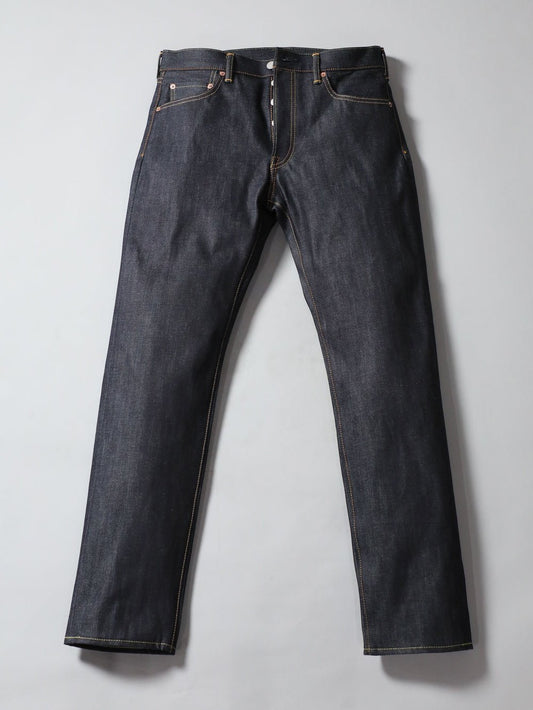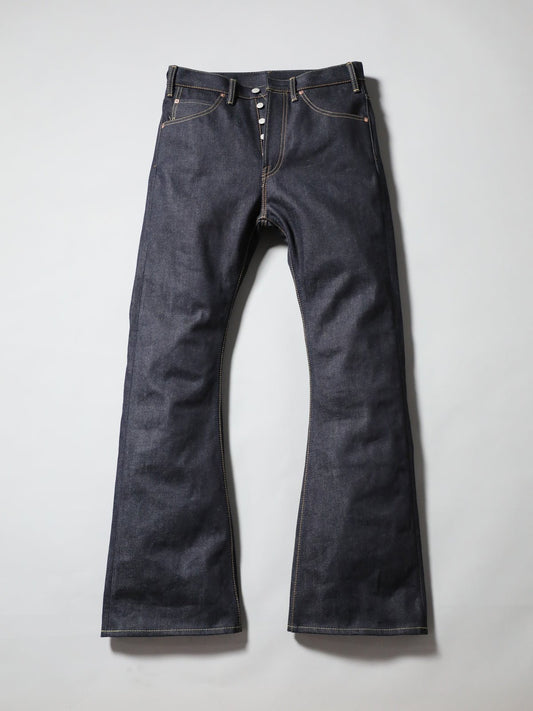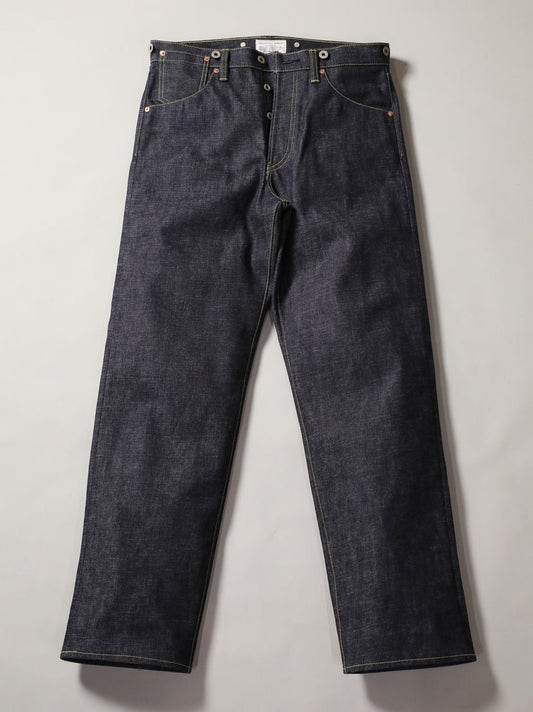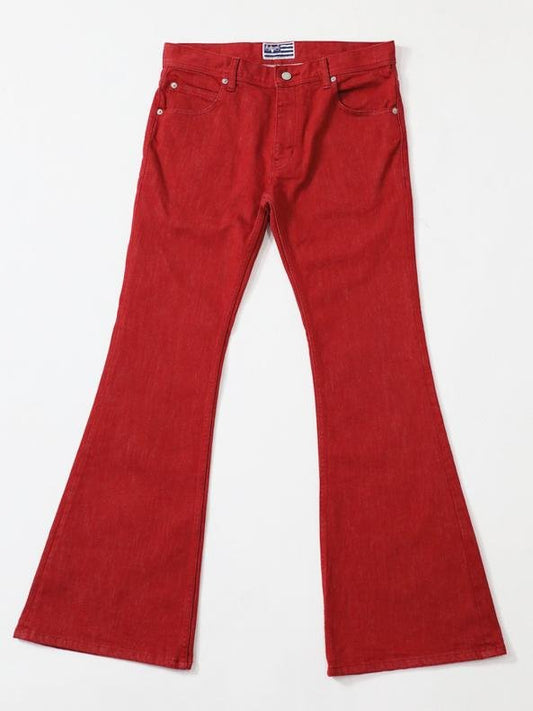A metal part attached to the pocket portion of jeans.
This metal fixture is called a "rivet," and it is an essential part of the history of jeans.
In this article, we will introduce the history and types of rivets.
Understanding rivets will make your jeans selection even more enjoyable.

B-1969-XX-J Selvedge jeans Straight Selvedge Denim
What are rivets?

Rivets are metal parts attached to the edges of jeans pockets. That is a rivet.
In English, it is written "rivet" and means a tack.
A rivet has a structure in which a sharp metal fitting is inserted through the back side of the fabric, and the part that sticks out from the front side is secured with a metal fitting.
Rivets were created to reinforce the pockets and crotches of jeans, which are prone to tearing.
Let's look back at the history of rivets in more detail.
History of the birth of the rivet

https://commons.wikimedia.org/wiki/File:1850_Woman_and_Men_in_California_Gold_Rush.jpg
Adapted from wikimedia
In the 1800s, jeans were created and loved as work clothes for hard workers such as miners and farmers.
However, even sturdy jeans could not withstand hard labor and were often torn.
Jacob Davis, a tailor, took a role in this situation.
He was asked by the wife of a hard worker to "make strong jeans that would not tear," and he developed a method of reinforcing pockets, crotches, and other tear-prone areas by driving rivets into them.
The method of reinforcing jeans with rivets quickly became popular, and Jacob Davis's store became very prosperous. Gradually, more and more people began to copy this method.
Jacob Davis wanted to patent the method, but it was difficult to raise the money to pay for it.
He applied for a patent jointly with Levi Strauss, with whom he had a business relationship, and was officially granted a patent in May 1873.
Jacob Davis was then asked by Levi Strauss to become the factory manager of the first Levi's factory built in San Francisco.
He created a method of reinforcing jeans by hammering in rivets, which led him from tailor to Levi's factory manager. It's a dream come true.
Today, rivets are still driven into the pockets of many jeans.
Of course, rivets are practical parts to reinforce the fabric.
However, today, they also serve as a fashion feature and add originality to each brand.

There are different types of rivets!
Rivets have undergone various changes to meet the needs and convenience of the world. In this issue, we will introduce three typical types of rivets.
Punching type rivet

The first type of rivet was the "punched out" rivet, in which the metal fittings penetrated through the back of the jeans and exposed on the front.
The feature of this type of rivet is that the fabric from when the rivet was punched out protrudes from the center of the rivet.
The punched-out rivet is still very popular among jeans lovers and is still often used in vintage jeans.
Until the 1960s, punched-out type rivets were mainly used.
However, the rivets of those days were sharp because the rivets were processed by cutting the protruding parts with pliers, which had disadvantages such as damaging jackets and chairs, and damaging cowboys' saddles.
The "concealed rivet," introduced next, was created to improve the disadvantages of the rivet punching type.
Concealed Rivet

Before the hidden rivet was born, Lee, a competitor of Levi's, solved the disadvantages of the punched-out rivet.
They adopted the Battenkannuki fastening for back pockets instead of rivets, which became popular among cowboys.
Levi's, not to be outdone by Lee, repeated trial and error, and the "hidden rivet," which hides the rivet fastening inside, was born.
It must have been a source of pride for the brand that created the rivet to adopt the method of concealing the rivet rather than adopting the batten-kanuki method.
This hidden rivet was used from 1937 to around 1966.
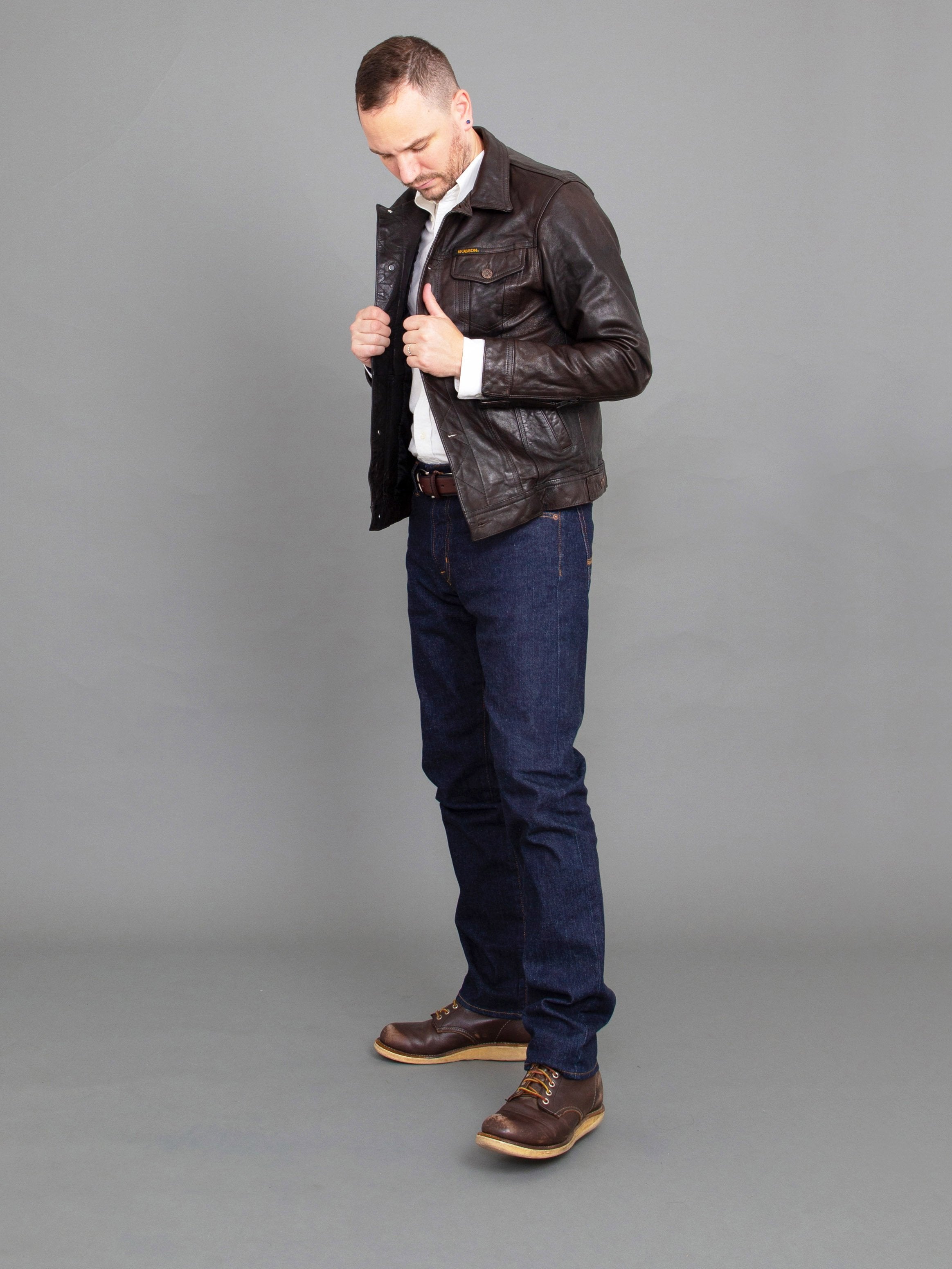
Cased rivets

The most common type of rivet on the market today is the riveted rivet.
The riveted rivet has the same basic structure as the punched rivet, but the rivet is a rivet with metal fittings over the part penetrated from the back.
The riveted rivet is not threaded like a punched rivet and gives a clean impression.
When choosing jeans, pay attention to the rivets.

Rivets were originally used to reinforce jeans, but now there are many fashionable rivets that are part of a fashionable look.
In the past, pure copper rivets were commonly used, but recently there are more and more jeans with silver rivets that can be easily matched with beautiful styles.
Rivets are the focus of each jeans manufacturer. When choosing jeans, please pay attention to the rivets as well.
Of course, BOBSON also uses punching type rivets on its vintage jeans and offers you a pair of jeans with attention to detail.
BOBSON's selvedge jeans for you who love jeans

BOBSON has created the highest quality selvedge jeans with all the history of Japanese jeans, paying attention to every detail in fabric, sewing, and design.
The name is "B-1969-XX-J STRAIGHT SELVEDGE DENIM".
This is a pair of jeans for those who love jeans so much that they can enjoy the shrinkage and fluffing that only raw denim can bring when washed.
Look, touch, wear, and feel the history of good old jeans.
Check the charm of "B-1969-XX-J STRAIGHT SELVEDGE DENIM" here.


